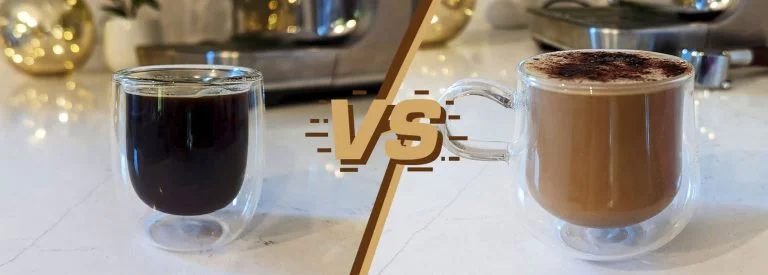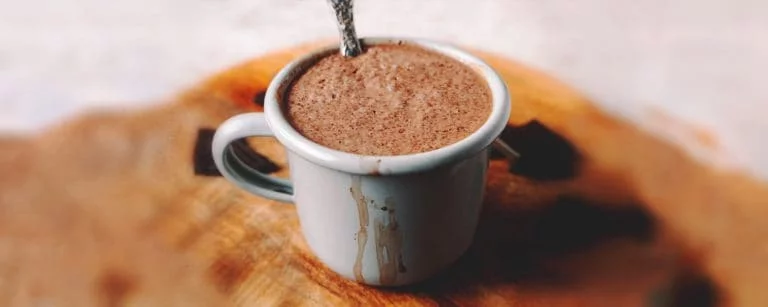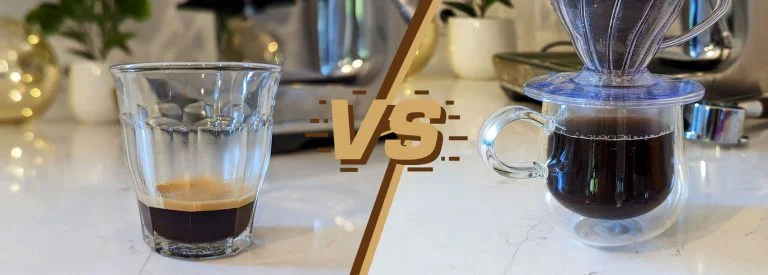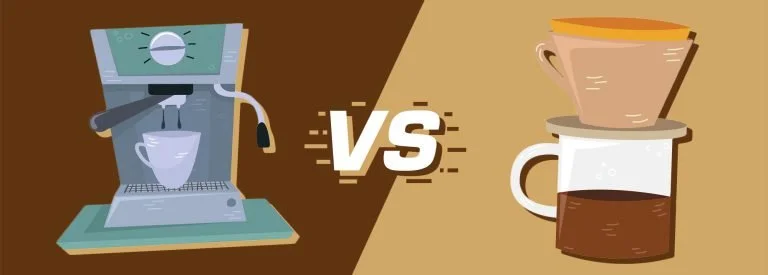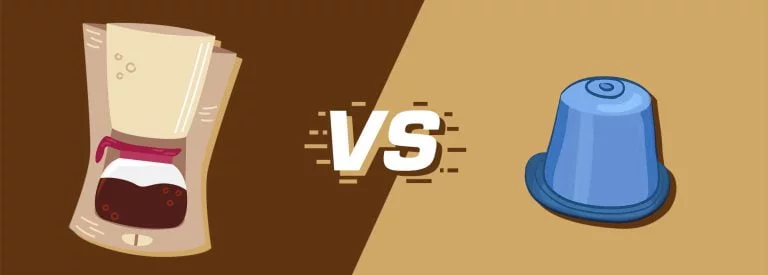Espresso vs Mocha: What Makes These Coffee Drinks Different?
Espresso and Mocha are famed coffee drinks around the world, but you’ve probably wondered: what are the exact differences between these two beverages?
To answer that, join me as we go in-depth into the world of these two drinks. I’ll cover everything from their origins, ingredients, ratios, and even how to make them.
What is an Espresso?
The origin of espresso traces back to Italy when Luigi Bezzera patented the first modern espresso machine in 1901. Its technique was to brew potent coffee swiftly using high pressure to force hot water through fine coffee grinds.
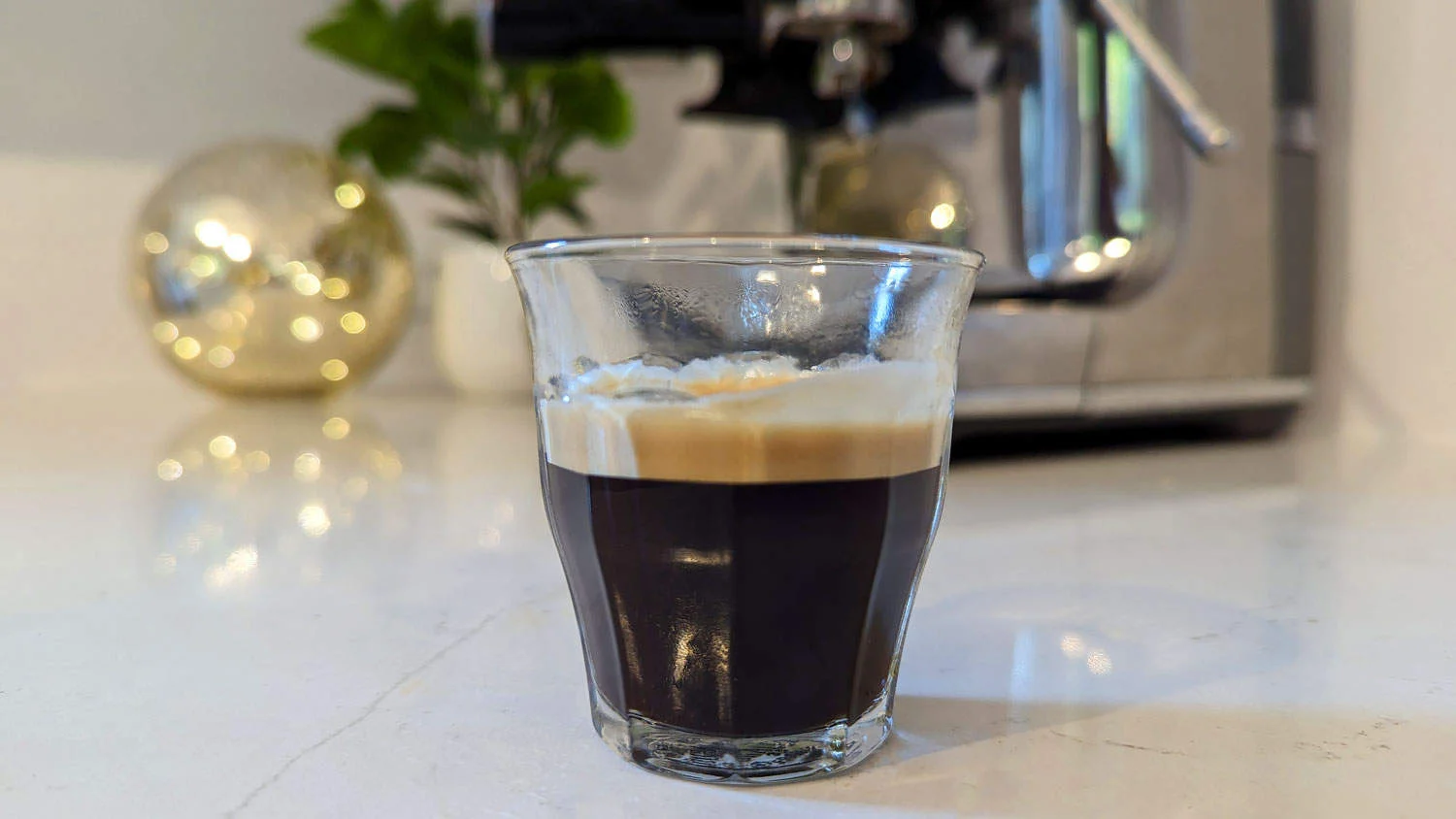
The coffee-to-water ratio for espresso ranges from 1:2 to 1:3, using 7g of coffee for a 1 oz single shot and 14g for a 2 oz double shot. Third-wave coffee uses more coffee, 9g for single and 18g for double. The drinks are poured into small demitasses that hold 60 to 90 ml (2–3 US fl oz).
Espresso is known for its potent and rich taste. For me, the beauty lies in its balance of natural sweetness and bitterness with a bit of acidity. Each cup bears subtle notes of chocolate or caramel with occasional hints of nuttiness depending on how much you roast the beans.
Onto the texture, espresso carries quite a thick and syrupy quality. The eye-catching crema layer on top adds a velvety texture while contributing to the coffee’s bitterness. So while it looks great out of the machine, be sure to give it a mix before drinking.
Here’s a simple way to make espresso:
- Weigh the coffee for proper dosing.
- Grind your coffee beans to a fine size.
- Level your grinds in the portafilter.
- Tamp consistently.
- Extract the espresso.
- Analyze the taste.
For a more detailed guide, check out my article on how to dial in espresso at home.
Now let’s check out what Mocha is all about.
What is Mocha?
Caffé Mocha gets its name from the Yemeni port city of Mokha, which has been a central coffee trading spot for over 200 years. This espresso-based beverage fuses the strong flavor of coffee with the sweetness of chocolate and milk’s rich creaminess.
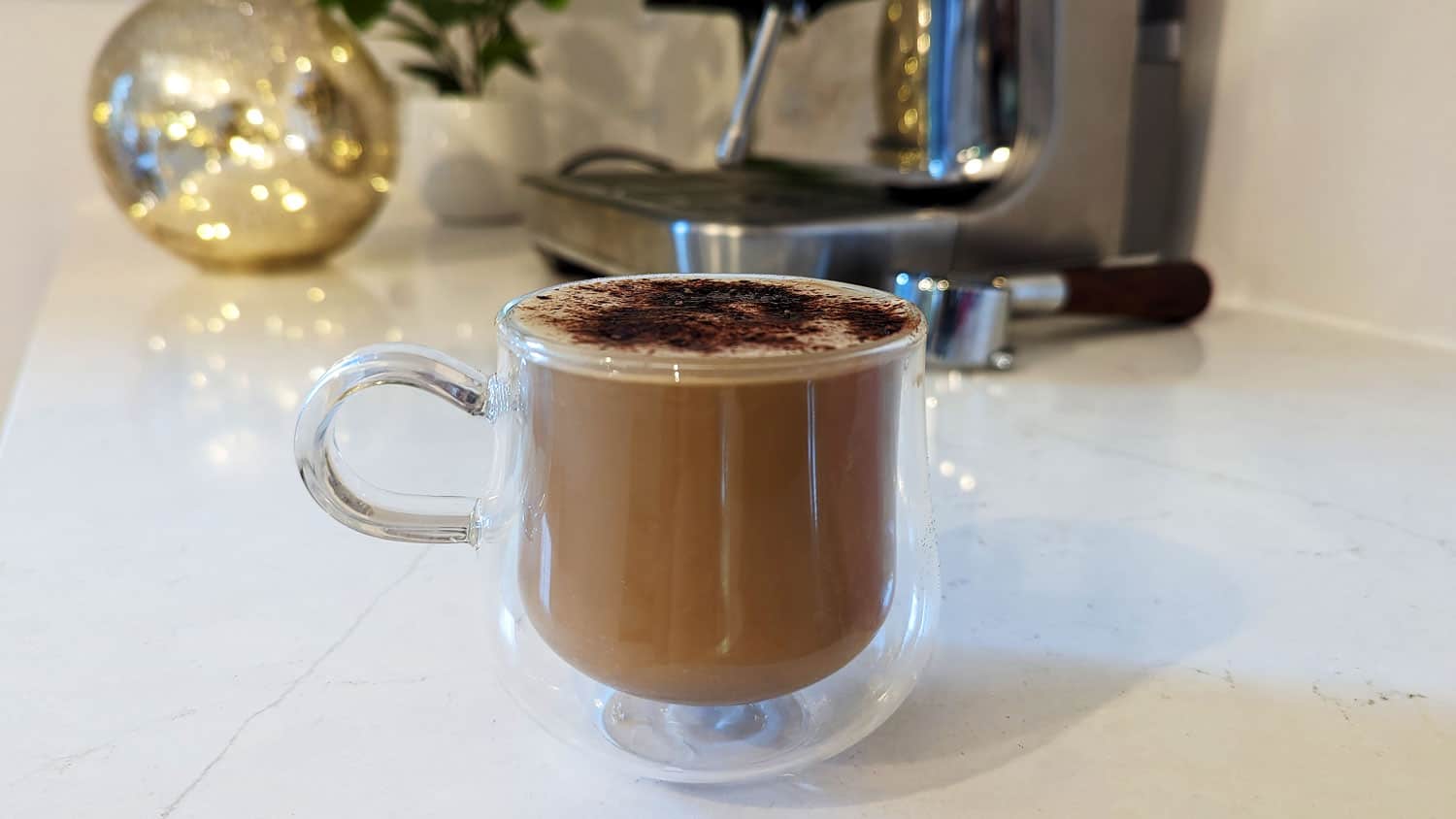
For a mocha, the coffee-to-water ratio of the espresso part remains the standard 1:2 to 1:3, using 7g for a 1 oz single shot and 14g for a 2 oz double shot (Third-wave coffee uses 9g and 18g respectively). One portion of the espresso is mixed with 3 to 6 portions of steamed milk with a velvety microfoam layer and a dash of either chocolate syrup, cocoa powder, or both.
A full caffé mocha ranges in size from 5 to 16 oz (150 to 480 ml) and is served in a ceramic or glass latte mug with a capacity of 240-300 ml (8-10 oz). The really large ones are served in tumblers at Starbucks.
Along with the espresso and chocolate, steamed milk is added, which can be whole milk or alternatives like soy, almond, or oat.
Talking calories, a 240 ml Mocha has about 180 calories, taking into consideration the 2 calories in each shot of espresso and 18 calories per 1 oz (30 ml) of whole milk. The chocolate can also contribute to this depending on your preferred amount. Caffeine is 60 to 80g in each espresso shot, while chocolate’s caffeine is too little to really bother adding it up.
Drinking a Café Mocha is really a treat. The blend of bold espresso flavors drowned in steamed milk and the rich, chocolatey sweetness of cocoa provide a unique and balanced drink. The texture is creamy, thanks to steamed milk and chocolate, and the frothy milk on top gives it a velvety feel. You can even add whipped cream, the icing on the cake.
Here’s how you can whip one up:
- Prepare a single or double shot of espresso.
- Stir the espresso and chocolate syrup or cocoa powder together.
- Pour the cold milk into a steaming pitcher up to the spout.
- Heat and steam the milk to around 160 degrees Fahrenheit, aerating it for a silky texture with microfoam.
- Pour the steamed milk over the coffee and chocolate blend.
- Optionally, top with latte art or whipped cream and sprinkle with chocolate.
Want to perfect your mocha-making skills? Dive into my guide on how to make a Caffé Mocha.
Espresso vs Mocha: A Close-up Comparison
Here’s an overview of the similarities and differences between espresso and its coffee-infused version, the Mocha:
| Aspect | Espresso | Mocha |
|---|---|---|
| Taste and Texture | Robust and concentrated flavor with sweetness, bitterness, and acidity. Dense and syrupy texture. | Blend of bold espresso flavors with chocolatey sweetness. Rich and creamy texture. |
| Coffee-to-Water Ratio | 1:2 to 1:3 | 1 part espresso, 3-6 parts steamed milk, a thin microfoam layer, & chocolate syrup or powder |
| Ingredient Ratio | Just coffee | 1 part espresso, 3-6 parts steamed milk, thin microfoam layer, & chocolate syrup or powder |
| Typical Serving Size | 1-2 oz (30-60ml) | 5 to 16 oz (150 to 480 ml) |
| Caffeine Content | 60-80 mg per 1 oz shot | 60-80 mg per 1 oz shot of espresso used |
| Calories | 2 calories per shot | 2 calories per shot of espresso, plus 18 calories per 1 oz (30 ml) of whole milk, plus the chocolate syrup. Approx. 180 calories for a 240 ml Mocha. |
| Acidity | Moderate | Moderate |
| Brewing Difficulty | Intermediate | Home barista |
| Bean Roast | Light to medium roasts for nuanced flavors. Dark roasts for traditional Italian espresso. | Medium-dark roasts for a bold flavor that pairs with chocolate |
Now, let’s dive into the specifics of these drinks:
- Ground Coffee Weight & Ratios: Espresso uses 7g of ground coffee for a traditional single shot and 14g for a double with a brew ratio of 1:2 to 1:3. Mocha uses the same amount of coffee for its espresso component, but it is combined with 3 to 6 parts milk and some form of chocolate.
- Taste: As a pure coffee, espresso balances sweetness with bitterness and some acidity. You can taste hints of chocolate or caramel with a subtle nuttiness in each sip. Of course, the chocolate is not as apparent as with a mocha, which has the boldness of espresso, with the profound sweetness of chocolate. Sometimes it is accompanied by a hint of vanilla to really bring the flavors out.
- Volume, Calories, & Caffeine: Espresso is served in smaller quantities of 1 to 2 oz and each ounce has 2 calories with 60 to 80 mg of caffeine. The milk in the Mocha makes its serving size go up to 5 to 16 oz, with approximately 180 calories for a 240 ml serving while the caffeine remains 60 to 80mg per shot used.
- Bean Roast: For espresso, I use light to medium roasts to unveil the vibrant flavors of my coffee beans. I avoid dark roasts that can introduce a strong bitterness to my drink. If you’re aiming for a traditional Italian espresso though, go for a blend of dark roast Arabica and some Robusta. Read my list of the best espresso beans in 2025 to help you make your pick.
To make Mocha, I recommend medium-dark roasts as they pair well with milk and chocolate. - Steamed Milk: While espresso doesn’t use milk, Mocha contains steamed milk together with its espresso base. Whole milk is the common choice among baristas but alternatives like soy, almond, or oat milk also work. And don’t forget that thin microfoam layer.
Check out my detailed guide on how to steam milk properly. - Serving Suggestions: If you’re drinking espresso, you can better appreciate the nuances of your coffee beans with a glass of sparkling water on the side to serve as a palate cleanser.
Mocha can be served as a dessert in itself, with its added chocolate and creamy milk. If you have a sweet tooth, you’ll love this one.
Now I hope you can see the many things that make these 2 drinks so unique. Turning an espresso into a mocha is not that hard, just add a lot of steamed milk and chocolate syrup or powder to turn it into an indulgent treat. But this fundamentally changes the essence of the espresso.
Whichever drink you are preparing, be sure to check out my list of the best coffee beans for espresso in 2025.
Conclusion
If I were to choose between a simple shot of espresso and its cocoa-infused cousin, I’d opt for a pure espresso shot any day. Granted, I do treat myself to sweetened milk and coffee beverages like the recipes here, but Mocha isn’t on the top of my list. My son loves it though, with caffeine-free coffee of course 😉
It’s all subjective though, and those are just my preferences.
So what’s your favorite coffee? Share your thoughts in the comment section below.



